
Antonia Gonzales
Native Voice One - NV1
A five minute, weekday newscast dedicated to Native issues, that compiles spot news reports from around the country, anchored by Antonia Gonzales (Navajo).
- 4 minutes 59 secondsWednesday, January 22, 2025

Tribal leaders are assessing what the next Trump administration means for their communities nationwide.
South Dakota Public Broadcasting’s C.J. Keene reports.
State Sen. Tamara Grove (R-SD) is from Lower Brule.
She says there is reason to be hopeful in the next administration, namely the representation of states with high tribal populations with the incoming government.
“I’m hopeful this four years will include the Native American community. When you have people like (Senate Majority Leader) U.S. Sen. John Thune (R-SD) in office who says ‘South Dakota’ – we have nine tribes here. I just really believe that will open up some doors.”

(Courtesy Representative Peri Pourier / Facebook)
On the other hand, Pine Ridge State Rep. Peri Pourier (Oglala Lakota citizen/D-SD) says she’s cautiously optimistic about some cabinet picks, particularly former Gov. Doug Burgum (R-ND) for Secretary of Interior.
“It seems like he has a good grasp on trust responsibilities with Native American tribes and the treaty obligations. I hope he holds the BIA accountable in all aspects. I hope he initiates policy reform, and really weights out their performance when it comes to public safety efforts.”
Gov. Burgum previously prioritized tribal relation during his time as governor.

A wooden cross with the words “Four Yupiit Ancestors” marks the spot where the remains of four Yup’ik inhabitants taken from the region in 1907 were buried in November 2024 after being returned to the Orutsararmiut Traditional Native Council. (Photo: Evan Erickson / KYUK)
In Alaska, Bethel’s tribal government recently repatriated the remains of four Yup’ik ancestors taken from the area more than a century ago.
KYUK’s Evan Erickson has more.
At the Bethel Memorial Cemetery at the edge of the tundra, a large wooden cross protruding from a single gravesite bears only the words “Four Yupiit Ancestors”.
In November, the partial remains of four Yup’ik inhabitants of the Bethel area were finally laid to rest by Bethel’s tribe, the Orutsararmiut Traditional Native Council (ONC).
They had been stored at the University of Pennsylvania Museum of Archaeology and Anthropology, better known as the Penn Museum, for more than a century.
The repatriation is the product of a years-long process under the federal Native American Graves Protection and Repatriation Act (NAGPRA).
The law has facilitated the transfer of the remains of tens of thousands of Native Americans stored in museum collections and laboratories back to federally recognized tribes since its passage in 1990.
Nevertheless, hundreds of thousands of remains and sacred objects still remain in the possession of museums, universities, and federal agencies across the United States.
At the request of ONC in November, the City of Bethel agreed to dig a gravesite for the remains at the Bethel Memorial Cemetery.
In a meeting of the Bethel City Council shortly after the burial, acting city clerk Kevin Morgan shared an email sent to the city by the tribe describing the remains.
“It was an adult male, the cranium and mandible, mandible of a female, mandible and part of the skull of a female, and the cranium and cranial bones of … a 15-year-old female.”
Notice of the ancestral remains as required under NAGRA was first made by the National Park Service in late 2022, though it is unclear when Bethel’s tribe received the remains.
ONC did not respond to multiple requests for comment.
Little is known about the four recently buried Yupiit ancestors, but according to the federal register, the remains were removed from a site near Bethel in September 1907 as part of a Western Alaska expedition led by Penn Museum’s general curator of American archaeology George Byron Gordon.
That same year, Gordon collected and removed hundreds of cultural items from the region as part of a canoe expedition of the Kuskokwim River that brought the anthropologist to Bethel.
According to The Repatriation Database, a project by nonprofit investigative journalism organization ProPublica, the remains of at least one person of interest to Bethel’s tribe are still being held by the Alaska State Medical Examiner Office, but have not been made available for repatriation.
The Penn Museum did not respond to multiple requests for comment about the history of the remains while in the museum’s possession.
Get National Native News delivered to your inbox daily. Sign up for our daily newsletter today.
22 January 2025, 4:56 pm - 4 minutes 59 secondsTuesday, January 21, 2025

After nearly 50 years in federal prison, Leonard Peltier is free to go home.
Outgoing President Joe Biden commuted the sentence of the Native American activist for his role in a 1975 shootout with FBI agents on the Pine Ridge Reservation.
Two agents – Jack Coler and Ron Williams – were shot dead, as well as AIM activist Joe Stuntz (Coeur d’Alene).
SDPB’s Lee Strubinger has more.
Peltier will serve the remainder of his sentence in home confinement.
The pardon was seen as the last chance to free Peltier from prison, who is 80 and is in poor health.
“It was the right thing to do.”
That’s Rapid City-based lawyer Bruce Ellison, who represented Peltier in the original case 50 years ago.
Ellison, who was 25 at the time, said there was conflicting evidence against Peltier.
“It took way too long for a president to realize that clemency was at least an appropriate remedy.”
The move drew applause from groups like Amnesty International — and condemnation from the Senate Majority Leader, U.S. Sen. John Thune (R-SD).
Ed Woods is a retired FBI agent who runs the No Parole Peltier Association.
“Whether he goes back to the reservation — he’s in poor health — Jack (Coler) and Ron (Williams) are still dead. Peltier has to live with the aging process just like the rest of us.”
Jean Roach (Mnicoujou Lakota) is a longtime Free Leonard Peltier activist who was there during the shootout in 1975. She was 14.
She’s excited for Peltier to come home, but …
“Our work is not done until all of our people are treated with the basic human rights that we all deserve.”
NDN Collective, an Indigenous rights organization, has purchased a home for Peltier on the Turtle Mountain Reservation, where he is enrolled.
Biden’s commutation takes effect on February 18.
The Navajo Nation hosted an Inauguration watch party on Monday at the tribe’s Washington D.C. office, as Antonia Gonzales reports.Navajo Nation President Buu Nygren had planned to attend President Donald Trump’s swearing-in ceremony … in person outdoors … but was among the thousands of people who had to change plans after the event was moved inside for what organizers said was the weather.
Temperatures were in the 20s Monday morning as President Nygren and others watched the event on TV.
Nygren says some things that resonated with him in President Trump’s speech were economic development and public safety.
“And some of the things like public safety really resonated with me as far as how do we make our communities safter, how do we make sure us as Americans feel safe in the communities that we live in. As president of a tribal nation, as a tribal leader, definitely trying to make sure that that promise is kept in Indian Country, because we all deserve it.”
Nygren says the Navajo Nation is putting together a list of priorities to work on with the Trump Administration.
As to outgoing President Joe Biden granting Leonard Peltier’s freedom, Nygren says he was glad it happened.
He recently signed a letter of support for Peltier’s release.
“It’s a Native elder that is up in age. It’d be good for him to see his homelands again, to really enjoy where he comes from and really enjoy what he’s fought for when he was a young man as well, and for him to be back with the animals, the land, and the waters that really, what brought him joy and happiness to really see him enjoy that is gonna be wonderful for not only Indian country but for himself as well too. So very, very, very proud and happy that President Biden took him up on that because I know that was needed for a very, very long time.”
Peltier himself often wondered if he’d see the world outside prison walls.
In this 2000 interview with Brian Bull while he was at the Federal Correctional Institution in Leavenworth, Kan., Peltier shared this statement should he die before gaining freedom:
“Being an Indian, I’m very proud of my people. Especially those that have made good lives for themselves and made big advantages to help our people survive, and thrive as a government. And if possible, I’ll see’em in the ceremonies.”
Get National Native News delivered to your inbox daily. Sign up for our daily newsletter today.
21 January 2025, 4:21 pm - 4 minutes 59 secondsMonday, January 20, 2025

(Photo: KARPOV THE WRECKED TRAIN / Wikimedia)
In his final minutes as president, President Joe Biden granted Leonard Peltier executive clemency Monday.
The AIM activist had been serving two life sentences for the 1975 murders of two FBI agents on the Pine Ridge Reservation.
Peltier has long maintained his innocence, and had supporters from many tribal and world leaders, and the former U.S. Attorney who prosecuted his case.
In a statement issued that same morning, Amnesty International says President Biden was right to commute the life sentence of Peltier, “given the serious human rights concerns about the fairness of his trial.”
Stay connected to National Native News for the latest updates and reactions.
 This week sees mass gatherings to honor Martin Luther King Jr. Day and to celebrate – or protest – President Donald Trump’s inauguration.
This week sees mass gatherings to honor Martin Luther King Jr. Day and to celebrate – or protest – President Donald Trump’s inauguration.Monday’s observance for Dr. King honors the slain Baptist minister and civil rights leader who, while recognized for championing the desegregation of schools and public places for Black people in the Deep South and elsewhere, was also a vocal supporter for Native Americans.
In the 1950s, King helped the Poarch Creek Indians of Alabama with desegregation efforts, allowing darker-skinned children of the tribe to ride the bus after being excluded for years.
And during the famed March on Washington in 1963, a large Native American contingent was among those attending.
Notable Native leaders have cited King’s influence in helping inspire and shape their own civil rights campaigns.
King also spoke out against the oppression and genocide of North American’s Indigenous peoples, writing in his 1963 book, Why We Can’t Wait.
“Our nation was born in genocide when it embraced the doctrine that the original American, the Indian, was an inferior race. Even before there were large numbers of Negroes on our shores, the scar of racial hatred had already disfigured colonial society. From the sixteenth century forward, blood flowed in battles of racial supremacy. We are perhaps the only nation which tried as a matter of national policy to wipe out its Indigenous population. Moreover, we elevated that tragic experience into a noble crusade. Indeed, even today we have not permitted ourselves to reject or feel remorse for this shameful episode. Our literature, our films, our drama, our folklore all exalt it.”
King was born on January 15, 1929.
He was assassinated April 4, 1968 in Memphis, Tenn., ahead of a speech he was preparing to give in support of striking sanitation workers.

(Courtesy Ben & Jerry’s / Facebook)
Ahead of the inauguration, people marched to the Lincoln Memorial Saturday, where they raised concerns about women’s rights, the environment, immigration, and other issues, Antonia Gonzales reports from Washington, D.C.
Demonstrators included Christina Diego, a member of the Colville Tribes.
She moved to D.C. from Seattle, Wash. to work on Indian health care issues.
“We’re all upset at the lack of polices and systems that support the mass population, and we’re all upset and hoping for a better future.”
Diego wants to advocate for the protection of health care for American Indians and Alaska Natives … as the Trump administration takes office.
Other demonstrators traveled from states across the country, including from Arizona.
Antonietta Quesada (Mexican American) is concerned about immigration policy.
“We have a lot of family that have crossed over before and who honestly cannot cross over right now, So it’s been really rough. That’s what we are marching for today.”
National groups were among those representing their organizations like the Sierra Club.
Elizabeth Scrafford is its Western Field Director. She says the organization is an ally of tribes, which have been.
“Long-time protectors of our land and how we learn from that wisdom and how can we move together to protect the environment.”
And Brittany Murray of Ben and Jerry’s Ice Cream was helping hand out free “Peace, Love, and Ice Cream” cups.
“Ben and Jerry’s is all about the people. They support the people, they fight for our rights, and they want equality for everybody, so they’re down here marching with everybody, and we’re just here to meet them at the end and give out ice cream.”
The march is said to have attracted thousands of people to the nation’s capital, ahead of President Trump’s next term.

Gov. Mike Dunleavy and President Donald Trump in 2019. (Courtesy Gov. Mike Dunleavy / Facebook)
Gov. Mike Dunleavy (R-AK)’s staff says they haven’t heard back from Trump’s transition team about his Alaska Federal Transition Report, a 27-page wishlist the governor sent to the incoming president just after his election.
One of Gov. Dunleavy’s top priorities is a request to reverse Biden Administration policies that restrict oil development and return control of subsistence hunting and fishing to state management.
Rhonda McBride from our flagship station KNBA reports.
When the governor floated some of these proposals in the past, opponents didn’t take them seriously.
They said they amounted to political posturing.
State Sen. Donny Olson (Inupiaq/D-AK) says some of the oil development proposals might help his district on the North Slope, but he’s worried about Dunleavy’s push to return fish and game management to the state and do away with the Federal subsistence board.
He recalls the bitter debates in the legislature in the 1990’s that failed to reconcile state and federal laws – and ultimately led to a system of dual fish and game management.
“What I want to do is look and continue to move Alaska forwards. The last thing I want to do is go back to those type of days, giving back to the state, especially the current administration, it would not be something positive.”
The Dunleavy list of priorities also asks Trump to reverse Biden Administration policies for Alaska on Land into Trust and Native Allotments.
If that happens, that might squash the Eklutna Tribe’s plans to build a small casino near Anchorage.
The Alaska Federation of Natives (AFN) is working on a response to Dunleavy’s requests to the Trump transition team.A
AFN’s President Ben Mallott (Lingít & Athabascan) says much of what Dunleavy wants goes against resolutions passed at last fall’s AFN Convention that seek to strengthen Native access to fishing and hunting.
“We are reviewing it, making sure our communities, our relations, our tribes have a seat at the table. A lot needs to be laid out to make sure it recognizes our aboriginal hunting and fishing rights.”
President Mallott says it’s also looking through the proposals to see if there might be common ground.
Some of the governor’s supporters praised him for reaching out to Trump early and identifying Biden policies that might quickly be reversed by Executive Order.
Dunleavy asks Trump to issue some of these on his first day in office.
Mike Porcaro is a conservative radio talk show host and an ad agency owner who sometimes works as a consultant for Dunleavy.
He says Trump and Dunleavy are friends – which will help the governor with his wish list.
“He’s a big fan of Alaska, and he wants to see Alaska achieve everything that Alaska can possibly achieve. Because I’m sure that he said, ‘Gee. How can we help?” So I think given all of that, the governor saw a real opportunity to say ‘OK. Let’s strike while the iron’s hot here.”
The governor’s list asks for Trump to reinstate federal support for the Ambler Road and to reverse the ban on roads through the Tongass National Forest.
He also asks Trump to create a cabinet-level taskforce to address Alaska issues and for consultation on key administration positions that affect the state’s resource development.
When asked for comment, Dunleavy’s spokesman Jeff Turner said, “The plan speaks for itself.”
Get National Native News delivered to your inbox daily. Sign up for our daily newsletter today.
20 January 2025, 4:02 pm - 4 minutes 58 secondsFriday, January 17, 2025

Photo: NDN Collective protestors call for release of Leonard Peltier outside the White House in September 2023. (Courtesy NDN Collective / Facebook)
With President Joe Biden’s term coming to a close, supporters of Leonard Peltier are urging the president to grant executive clemency.
Peltier has been serving two consecutive life sentences for the murders of FBI Agents Jack Coler and Ronald Williams in South Dakota in 1975.
This Wednesday, representatives of NDN Collective and Amnesty International sent a letter to President Biden, citing the number of tribal nations and leaders, Nobel Peace Prize laureates, and law enforcement officials who’ve supported Peltier’s release.
This includes James Reynolds, the former U.S. Attorney whose office oversaw Peltier’s prosecution.
In a 2021 letter sent to Biden, Reynolds wrote: “In my opinion, to continue to imprison Mr. Peltier any longer, knowing all that we know now, would serve only to continue the broken relationship between Native Americans and the government.”
Peltier is now 80 and is being held at a federal penitentiary near Orlando.
An Anishinaabe-Lakota tribal member, he is reportedly in poor health and requires a walker.
The agents’ deaths occurred during a shootout with American Indian Movement members.
One AIM member, 23-year-old Joseph Stuntz of the Coeur d’Alene Tribe, was also killed.
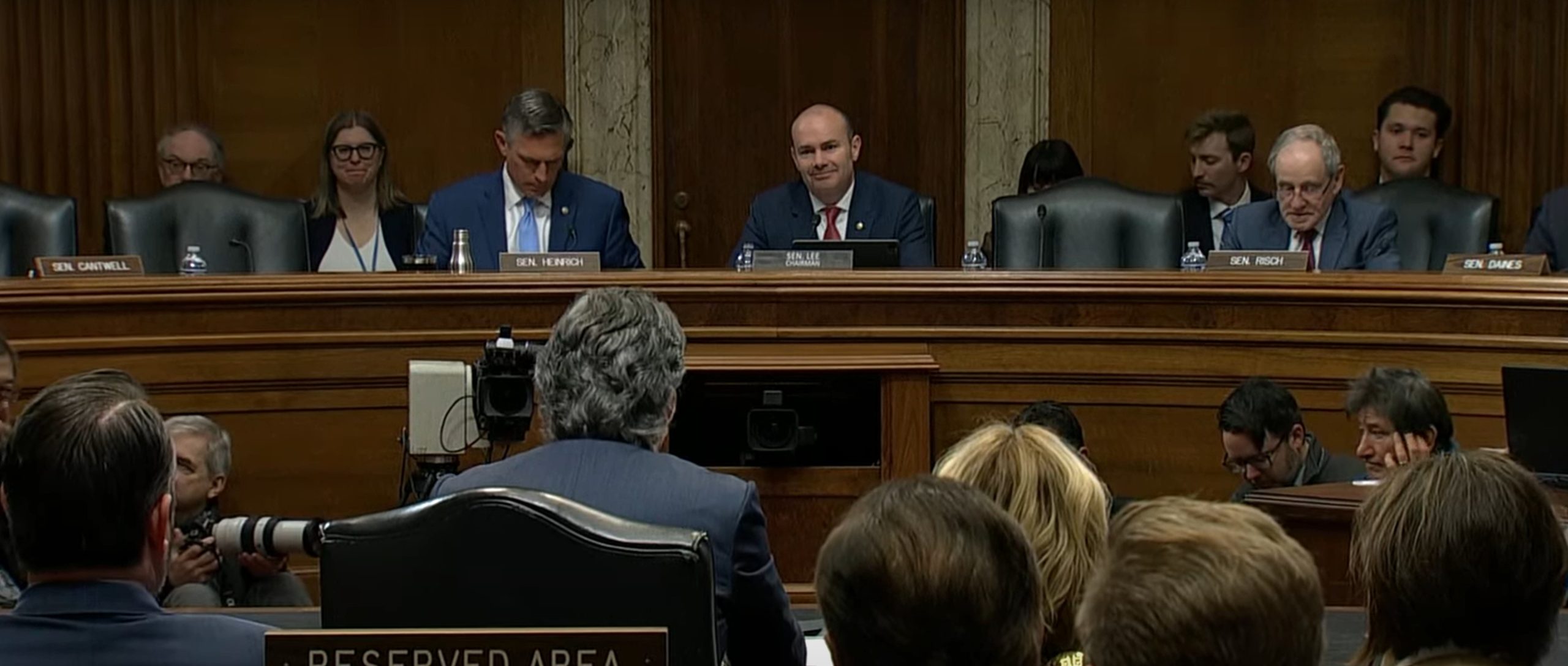
Courtesy C-SPAN
Tribes were mentioned several times during Thursday’s U.S. Senate hearing for President-elect Donald Trump’s nomination of former Gov. Doug Burgum (R-ND) for Secretary of the Interior Department.
Senators on the Committee on Energy and Natural Resources said there’s support for Gov. Burgum’s confirmation from the five tribes in his state and the Coalition of Large Tribes.
A letter of support was read from the Standing Rock Sioux Tribe of North and South Dakota.
Much of the three-hour hearing focused on energy development.
Public lands, water, and conservation were also discussed.
Democratic senators including U.S. Sen. Maria Cantwell (D-WA) were among those to mention tribal consultation.
Burgum described how he sees it.
“Spending time, going to the tribes, listening, sometimes listening for hours, to really understand what the issues are. We achieved MOUs on law enforcement. I mean some of the scarcest and most devastating law enforcement in the country is the lack of BIA agents on federal land. Some of the tribal reservations have become harbors for criminal organizations because they that we don’t have enough resource there, and then our local county sheriffs, the state police -in many cases- didn’t have jurisdiction.”
While the Department of the Interior manages the country’s natural and cultural resources, it also oversees the Bureau of Indian Affairs and the Bureau of Indian Education.
Outgoing Secretary of Interior Deb Haaland (Laguna Pueblo) made history as the first Native American to hold the position.
During her time in office, she made tribes a priority in the department, including working to strengthen consultation and launching an investigation into federal Indian boarding schools.

The Flandreau Santee Sioux Tribal flag display in the South Dakota capitol rotunda. (Photo: Lee Strubinger / SDPB)
In South Dakota, a flag representing the Flandreau Santee Tribe is being displayed in the Capitol rotunda following the tribe’s announcement that it’s lifting its ban against Gov. Kristi Noem (R-SD).
Last year, all nine tribes located in the state banished Gov. Noem from reservation lands.
SDPB’s Lee Strubinger has more.
In a letter dated January 14, Flandreau Santee Tribal President Anthony Reider said the Republican governor met one of their stipulations contained in its banishment resolution — an apology.
President Reider said Noem apologized in several meetings for comments she made last year about Native parents and kids, which for tribal officials was the final straw after a series of contentious exchanges.
A spokesperson for the governor’s office said multiple tribal members attended those meetings.
Flandreau is the first tribe to lift its ban.
The Flandreau tribe’s flag is the first to be displayed in the Capitol since the Rosebud and Standing Rock tribes displayed their flags almost a year ago.
Both tribes asked their flags be removed following Noem’s comments last year.
David Flute, Secretary of Tribal Relations, is encouraging other tribes to consider sending their flags to be displayed in the South Dakota capitol.
That, he said, would continue Noem’s vision have having all nine tribal nations represented in the rotunda.
The Flandreau Tribal president wished Noem luck ahead of her Senate confirmation hearing for the Department of Homeland Security.
That hearing was scheduled for Friday morning.
Get National Native News delivered to your inbox daily. Sign up for our daily newsletter today.
17 January 2025, 11:06 am - 4 minutes 59 secondsThursday, January 16, 2025

As Gov. Kristi Noem (R-SD) is likely headed to Washington DC for a cabinet position, tribal leaders are calling for a reset in state-tribal relations.
That came during an annual address to the South Dakota legislature by tribal chairmen.
South Dakota Public Broadcasting’s Lee Strubinger has more.
Chairman Garrett Renville of the Sisseton Wahpeton Tribe says the state of South Dakota is in the midst of an historic moment.
In addition to changes for Gov. Noem, the U.S. Senate is led by Sen. John Thune (R-SD).
Chairman Renville says the state’s lone congressman, U.S. Rep. Dusty Johnson (R-SD), is working well in a divided U.S. House of Representatives.
“South Dakota is now literally at the center of the political universe. We have an opportunity, now, to bring about real change for our people and at all levels of government. But we must work together.”
Renville says state-tribal relations have hit a series of breakdowns in government-to-government engagement.
That came following comments by Noem alleging Mexican drug cartels were operating out of reservations.
“Today, let’s reset. Today, let’s rebuild. Today, let’s start to listen and actually hear.”
Renville points to areas where the state and tribes have worked together — including on a resolution in 2024 urging congress to address law enforcement shortages on tribal lands.
He’s urging the state to pass another resolution urging congress rescind the Dakota Removal Act.
Renville and other tribal leaders met with Noem and Lt. Gov. Larry Rhoden (R-SD) earlier this week.
Lt. Gov. Rhoden is next in line to become governor when Noem resigns her seat.
Standing Rock Chairwoman Janet Alkire also attended the meeting.
She says they talked with Noem about having a tribal law enforcement training center in the northern part of the country. That training takes place in New Mexico.
“If Gov. Noem makes it through the nomination process, she’ll be in charge of all the training for law enforcement. That’s one of the things we wanted to visit with her [on]. If we had some place up north, rather than sending all our folks down south. I think that’s why some folks don’t last. Locally, it’s much better.”
Alkire says she’s also looking forward to working with Rhoden, who is a West River rancher, when he becomes governor.
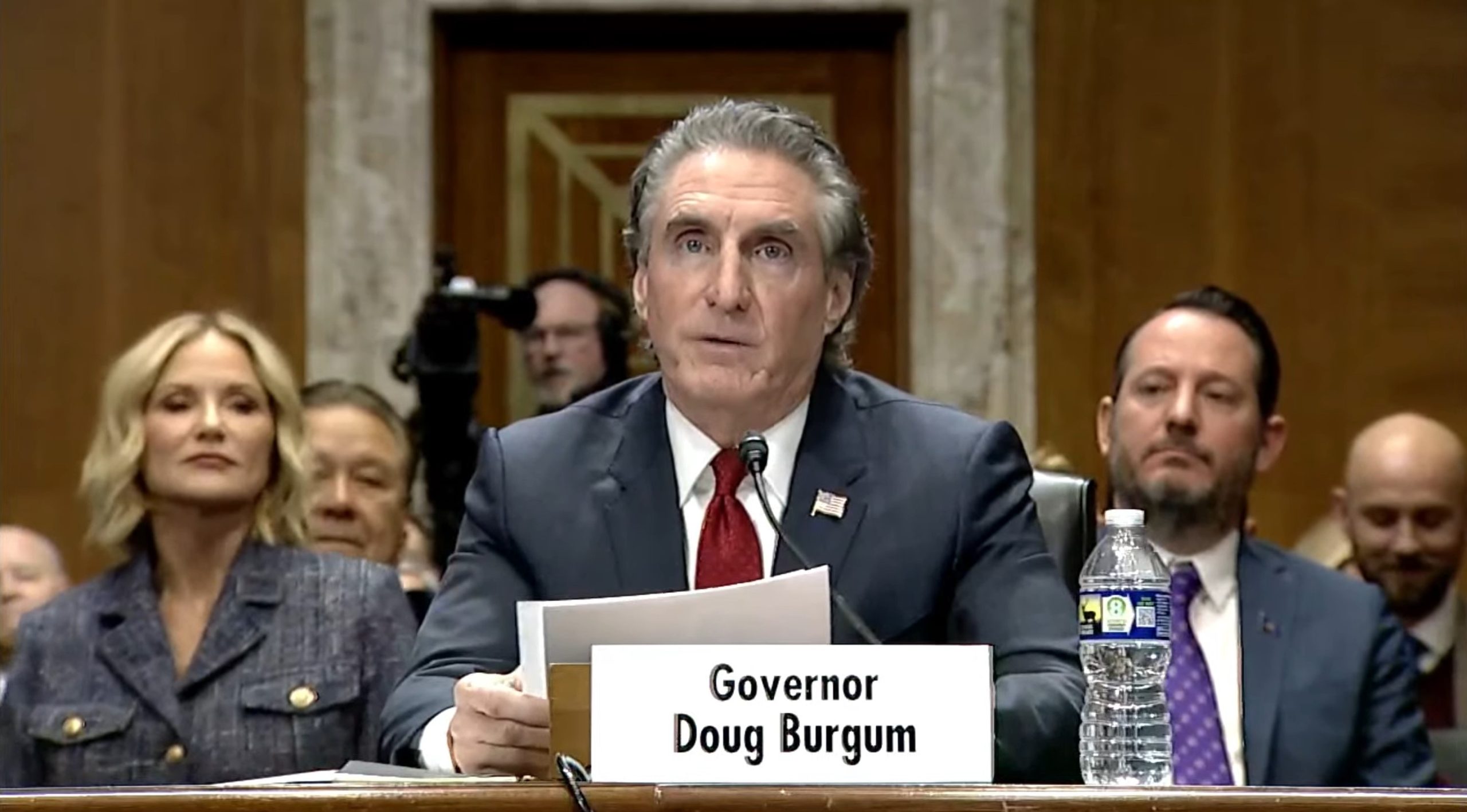
Courtesy C-SPAN
As Senate hearings continue this week for President-elect Donald Trump’s cabinet picks, tribal leaders are among those closely watching.
Navajo Nation President Buu Nygren issued a statement Wednesday, expressing his support for former Gov. Doug Burgum (R-ND).
Burgum has been nominated to lead the Department of the Interior.
A California tribe is celebrating after the Biden Administration green lit its petition to put land into trust for a major casino north of San Francisco.
As Jacob Resneck reports, that approval comes despite objections from neighboring tribes and many of the state’s political leaders.
The Koi Nation of Northern California applauded the U.S. Department of the Interior’s decision on Monday to put 68 acres into trust for the Shiloh Resort and Casino in northern Sonoma County.
The decision follows a federal judge rebuffing attempts by a neighboring tribe to block the development.
In a statement, Darin Beltran, chair of the Koi Nation Tribal Council, said the federal government’s approval fills the tribe’s hearts with promise and hope.
But neighboring tribes including the Federated Indians of Graton Rancheria which operates a casino complex 15 miles south of the site, has called the project a travesty as it’s outside the Koi Nation’s ancestral lands in a neighboring county.
Gov. Gavin Newsom (D-CA) also urged the Biden Administration to reject the casino project that includes more than 100 table games, 2,700 slots, and a 400-room hotel.
Once completed, the Koi have signed an agreement with the Chickasaw Nation of Oklahoma to manage the casino and resort.
Get National Native News delivered to your inbox daily. Sign up for our daily newsletter today.
16 January 2025, 5:15 pm - 4 minutes 59 secondsWednesday, January 15, 2025

On Tuesday, President Joe Biden designated the Chuckwalla National Monument in California, located near Joshua Tree National Park.
The area holds spiritual, historic, and cultural significance to tribes.
Secretary of the Interior Deb Haaland (Laguna Pueblo) joined President Biden for the signing ceremony at the White House, which was streamed online.
In remarks, she talked about the importance of the administration working with tribes.
“When President Biden and I first stepped into these roles we understood fundamentally that tribes must be at the forefront of our efforts to conserve lands and waters we all depend on. Today I’m grateful for President Biden’s leadership, I’m grateful he has listened to tribes and local communities across the country and has committed our administration to conserving the places that are core to our identities and to our shared experiences.”
Biden also designed the Sáttítla Highlands National Monument in northern California.
“This area is also sacred to many tribal nations who were violently forced to leave their homes. You know, they held ceremonies here, they found sources of reverence and healing here and they’re preserving lands fundamental to who they are and their way of life. Folks, it’s important.”
Together, the monuments will protect 848,000 acres of lands.
A signing ceremony was planned last week in California, but was postponed due to high winds.
Tribal leaders have also been advocating for a third national monument in California to be designated before the end of Biden’s term on January 20.

Courtesy Angel Charley / Facebook
Women will hold the majority in the 2025 New Mexico Legislature, with more than 50%, after additional women were elected in November.
Among them is Angel Charley.
“What’s new is that we’re a majority female legislature now and I think what that means is we’re gonna be more responsive to family issues, community-based issues because of the experience that all of us as legislators are bringing. And I’m just looking forward to working on solutions that really impact people and families.”
Charley is Laguna, Zuni, and Navajo.
The Democrat will serve in the Senate for District 30, which includes a handful of tribal nations in the state.
She’s a long-time advocate for women and children, including being the former executive director of the Coalition to Stop Violence Against Native Women.
Her role as a state lawmaker will also include issues involving public safety and addressing violence against women.
“We know in our community is what actually is gonna work. And so previously when I worked at the coalition, we were a part of a cohort that passed the Indian Family Protection Act. And in that were solutions straight from our community, from people experiencing barriers directly, and creating law policy that addresses those. So I see that as the same thing, you know, in this new role that I’m gonna have is when we center the people who are most impacted by law, policy, and systems, we are all better, our systems are stronger for it.”
Charley is now the executive director of Illuminative, a national group working to uplift the voices and representation of Native people throughout the country.
The New Mexico legislative session begins next week.

2025 Champions for Change: Katie Lynch (Citizen Potawatomi Nation), top left clockwise, Lourdes Pereira (Hia-Ced O’odham/Tohono O’odham), Lily Painter (Kiowa/Winnebago), Maiyuraq Jones (Native Village of Unalakleet), and Joshua Ching (Native Hawaiian).
Five Native young people have been chosen to represent their communities on the national stage by the Center for Native American Youth at the Aspen Institute.
The Champions for Change class of 2025 represent Native nations from across the country, including Alaska and Hawaii.
Their areas of focus include improving Indigenous health systems, environmental rights, cultural representation, and art and literacy.
The program was launched in 2013 to highlight positive stories of impact from Indian Country.
Each year, five young people, ages 14-24, are selected.
The new class joins more than 50 active alumni.
2025 Champions for Change:
Joshua Ching (Native Hawaiian), 20, of Hawaii, studying Political Science and Ethnicity, Race, & Migration at Yale University
Maiyuraq Jones (Native Village of Unalakleet), 20 of Alaska, studying Environmental Science at Western Washington University
Katie Lynch (Citizen Potawatomi Nation), 23, of Michigan, PhD student of Health Infrastructures & Learning Systems at the University of Michigan Medical School
Lily Painter (Kiowa/Winnebago), 23, of Oklahoma, artist and storyteller, working towards her bachelor’s degree from the University of Oklahoma
Lourdes Pereira (Hia-Ced O’odham/Tohono O’odham), 24, of Arizona, Arizona State University gradudate, working for her tribe and the Administration for Native Americans
Get National Native News delivered to your inbox daily. Sign up for our daily newsletter today.
15 January 2025, 5:05 pm - 4 minutes 58 secondsTuesday, January 14, 2025

Members of the Native community in Los Angeles, Calif. gathered Monday evening, for a prayer and healing circle as wildfires continue to burn in Southern California.
The gathering at United American Indian Involvement (UAII) was intended to bring together community members and raise awareness about the resources being provided to those in need by the urban Indian organization.
UAII has set up an emergency response center – among efforts the organization is providing temporary shelter, coordinating housing, distributing emergency supplies, and coordinating transportation for those impacted by the fires.
The organization held a press conference before the gathering.
UAII board member Laura Escobar says that, among challenges they’re hearing from Native community members in fire zones, there are power outages – and people unable to leave secured areas and not being able to get necessities like food and water.
UAII board member and elder Keith Vielle says their effort is what community is all about that even though they may be far away from their reservations, they have Native values and traditional ways, which include helping one another.
They’re also offering hotel accommodations and meals, and working on long-term plans to offer assistance after the fires.
The organization is accepting donations and has a telephone helpline for those impacted by the wildfires.
According to the UAII, it serves a large urban Native population with more than 200,000 Native people living in Los Angeles County.
 Neighboring tribes are among those offering support to fight the wildfires.
Neighboring tribes are among those offering support to fight the wildfires.The San Manuel Band of Mission Indians in San Bernardino County says as its neighbors face overwhelming challenges of the devastating wildfires in Los Angeles County, the tribe is responding to mutual aid requests.
It has sent the San Manuel Fire Department to the Eaton Fire in Altadena to help battle the blaze.
In a statement, the tribe says during this difficult time, the tribe “stands united with the courageous first responders, fully committed to help safeguard homes, loved ones, and the spirit of community.”
Other California tribes and tribes across the country have sent fire trucks and crews to help battle the wildfires.

Courtesy C-SPAN
Nomination hearings for President-elect Donald Trump’s cabinet are scheduled to begin this week.
Tribal leaders from across the country are closely watching and are preparing for the incoming administration.
Discussions took place at the Biden administration’s final White House Tribal Nations Summit last month in Washington.
Tribal leaders also talked about the transition at a U.S. Department of Justice tribal consultation held in Santa Fe, N.M., leading up to the White House summit.

Leaders like Mark Mitchell with the Pueblo of Tesuque say regardless of which political party is in office, tribal treaty and trust responsibilities need to be kept.
He says the work of tribal leaders includes advocating for Native American issues and concerns, and for his tribe in New Mexico, that includes environmental and sacred site protection.
“How do we bridge the gap? How can we educate them, the incoming administration, as to their foresight? Because right now, I don’t think they’re looking at that. We understand the issue of having funding and relying on natural resources, et cetera, but at what costs to the tribes? Those are some of the questions we’re asking internally. So hopefully we come up with a strategic plan as we move forward.”
Mitchell says as the process for selecting the cabinet moves forward, he hopes there’s insight into Indian Country.
“I hope they have some type of Native person on there advising them that, hey, this is another route we can secure and address the issues of the Native communities. And I hope they’re doing that. I haven’t seen anything as of yet, but I sure hope they’re doing that.”
Senate hearings for nominees are scheduled to begin Tuesday.
Get National Native News delivered to your inbox daily. Sign up for our daily newsletter today.
14 January 2025, 5:10 pm - 4 minutes 59 secondsMonday, January 13, 2025

The mayor of Anchorage, Alaska has thrown her support behind the Eklutna Tribe’s efforts to build a small casino on the outskirts of the city.
The tribe sees gaming as an opportunity to create jobs and boost the economy.
As Rhonda McBride from our flagship station KNBA tells us, the endorsement comes amid a lawsuit to block the project.
Only about six-and-a half acres are involved – a Native allotment that has become a test case of tribal sovereignty in Alaska.
Gov. Mike Dunleavy (R-AK) has asked President-elect Donald Trump to reverse an Interior Department decision last year that cleared the way for the tribe to seek a permit for a gaming hall that would have up to 700 electronic slot machines.
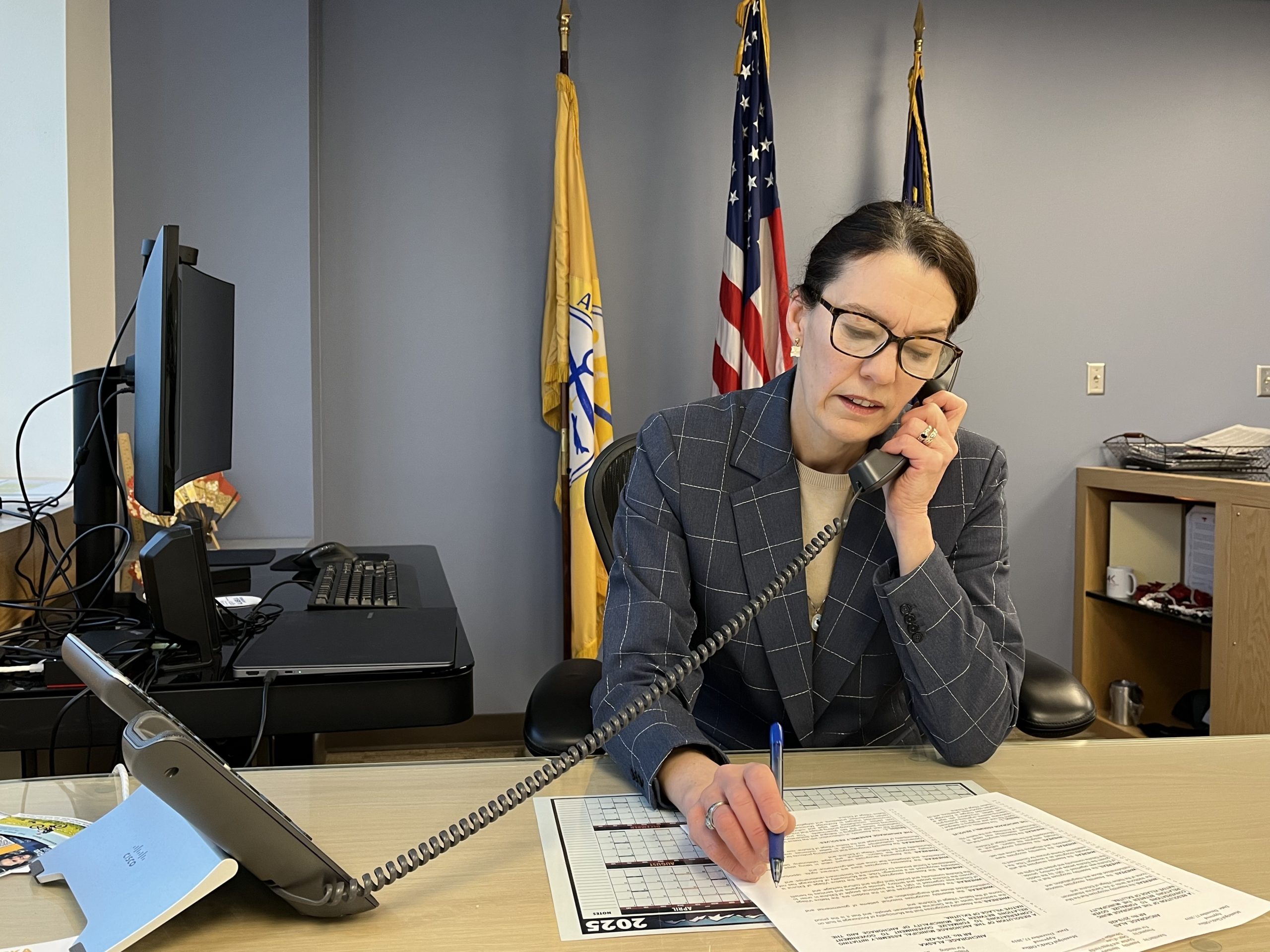
Mayor Suzanne LaFrance. (Courtesy City of Anchorage)
The BIA released its environmental assessment of the project and opened it up for public comment.
In her written response, Mayor Suzanne LaFrance gave a whole-hearted endorsement of the gaming hall, noting that the assessment found no significant concerns.
She also cited the Eklutna tribe’s track record for environmental stewardship.
“We’d like to formally share our support for the Native Village of Eklutna, as it exercises its sovereignty and pursues economic development.”
Mayor LaFrance says she has confidence in the tribe, based on its relationship with the city.
“There’s such an emphasis on listening, problem solving and being very open about the situation and so I feel like that’s part of what makes the relationship so strong.”
Sky Starkey is a tribal rights attorney.
“It’s really good to see Mayor LaFrance embracing what tribes have to offer.”
Longtime tribal advocates like attorney Starkey say these kinds of endorsements are not unusual in the Lower 48 states, but unprecedented in Alaska where there’s been an ongoing debate about whether tribes exist.
Michelle Demmert, an assistant professor at the University of Alaska-Fairbanks Department of Tribal Governance, says she’s glad to see the mayor acknowledge the importance of tribes.
“Tribes are really great partners. We bring in a lot of money, we bring in a lot of resources. We want the same types of healthy communities for our villages like everyone else wants.”
A group of neighboring property owners say the mayor shouldn’t have endorsed the project without hearing from them first.
In a lawsuit, they say the land does not have Indian Country status and that the casino will hurt the rural character of their community.

A community corn field at the Jemez Pueblo in north-central New Mexico, seen here on March 17, 2023. The Pueblo, which is largely supported by farming, irrigates its farms with snowmelt from the surrounding mountains. (Photo: Kaleb Roedel / Mountain West News Bureau)
The U.S. Department of Agriculture has a new plan to strengthen its collaboration with tribes and help build more sustainable food systems.
The Mountain West News Bureau’s Kaleb Roedel has more.
Nationwide, there are 574 federally recognized tribes.
Nearly half of them are in the West, where tribes manage or farm more than 55 million acres of land.
The USDA’s new strategy aims to help tribes better protect and preserve the natural resources and farmland they rely on.
That includes dedicating more staff and funding to conservation across tribal lands. And incorporating Indigenous knowledge into that work.
Roylene Comes At Night is a conservationist with the agency and a member of the Blackfeet Nation in Montana.
“This gives us an opportunity to now build this tribe by tribe, so that each tribal nation that has their own concerns can adapt and adopt those concerns to meet their needs.”
She says, overall, the new strategy supports tribes’ cultural and farming traditions. And will make sure their priorities and knowledge shape future federal policies.

UAII volunteers feed our Navajo Firefighters in Los Angeles County. (Courtesy UAII / Facebook)
The United American Indian Involvement (UAII), an urban Indian organization in Los Angeles, Calif., is offering support to those impacted by wildfires in the area.
The organization’s emergency response includes providing food, water, and temporary shelter to those in need.
Get National Native News delivered to your inbox daily. Sign up for our daily newsletter today.
13 January 2025, 5:26 pm - 4 minutes 58 secondsFriday, January 10, 2025

The Klamath Tribes – which are comprised of the Klamath, Modoc, and Yahooskin people – have sent help down to Southern California to fight the massive wildfires.
KLCC’s Brian Bull reports.
The Klamath Tribes sent a Type 3 fire engine and crew down to tackle the Eaton Fire, which was nearing 14,000 acres Thursday night.
The incident command post is at the Rose Bowl in Pasadena.
William Ray Junior is chairman for the Klamath Tribes.
He says the crew will be be on the fire line no later than Friday morning.
“Y’know, we had a lot of help in Oregon, in our backyard from Southern California crews, and we’re just returning the favor in their time of need and wanna just want to show that the tribes are supportive with our crews that we have available, with our Indian spirit of giving.”
Ray says the Klamath Tribes and U.S. Forest Service will jointly be sending a second engine and crew down before the weekend.
Both deployments are equipped for 14 days.
More fires are expected across Southern California due to ongoing dry weather and powerful Santa Ana Winds through early next week.
On Thursday, Navajo Nation President Buu Nygren said in a social media post that a team of wildland firefighters has been deployed to southern California to help battle the fires.
He says the Navajo Scouts, a team of 23 members, including a female firefighter, are highly trained to fight fires like these.
Members of the team are from various communities across the Navajo Nation.

Courtesy Natasha Hayden
A Kodiak Island resident has been honored with a national award for environmental leadership.
One of eight awardees, Natasha Hayden was recognized for her work advocating for Alaska Native fishing rights.
KMXT’s Davis Hovey has more.
When the Center for Rural Affairs in Nebraska contacted Natasha Hayden to tell her she’d won a national award, she says she almost thought it was a scam.
“Also, in today’s climate of where people are reaching out to you, to try to get you to send them money, and to send your personal information, there was quite a bit of skepticism about it. Just like, oh somebody is cold calling me basically to say you’ve won this award.”
But the award was real.
It acknowledges a range of advocacy work Hayden has been doing for Alaska Native people on Kodiak Island, including her tribe of the Native Village of Afognak, for years.
Over those last ten years as a tribal council member of her village, Hayden has focused on fisheries advocacy and stewardship of marine mammals around Kodiak Island.
Hayden is also part of the Kodiak Island Tribal Coalition, which represents the Kodiak Archipelago’s ten tribes.
She says various villages in the region have lost 50 to 100% of their commercial fishing permits in a larger outmigration from those communities over the course of a few decades.
“Seeing this severe negative impact and working towards restoring access to those fisheries that are right outside of our back door has been primary, and it’s intertwined with everything.”
Hayden says she is building on the resource management work that was done by generations preceding her, which she says future generations will take up as well.
“And I take a lot, I mean, a huge amount of comfort from the belief that the Alutiiq people have been here for thousands of years, and that we’re still going to be here in a thousand years.”
Hayden will receive $25,000 as part of her 2024 Environmental Leader award.
Other awardees include a Meskwaki artist and farmer from Iowa, an Indigenous food sovereignty advocate in Louisiana, and a Diné environmental scientist in Arizona.
Get National Native News delivered to your inbox daily. Sign up for our daily newsletter today.
10 January 2025, 4:54 pm - Thursday, January 9, 2025

Photo courtesy the Rogers Family / Facebook
People from across the country, including Indian Country, are checking in on family and friends in Southern California as wildfires devastate Los Angeles.
Fires have forced evacuations and have destroyed homes, businesses, and historic sites, which include the loss of Will Rogers’ historic home.
On Wednesday, California State Parks confirmed the loss and released photos of his ranch house and buildings at Will Rogers State Historic Park in Pacific Palisades burned to the ground.
A representative for the family of the famous Cherokee actor said in a statement, “while the loss to the ranch is devastating, it pales in comparison to the loss of property and businesses and more importantly, the lives of those in the surrounding area.”
Cherokee Nation Principal Chief Chuck Hoskin said in a statement “Will Rogers is among our most beloved Cherokees” and described the loss is a “tragedy”.
The tribe says its thoughts are with Cherokee Nation citizens living in California, and all those affected by the fires.

Prime Minister Justin Trudeau at a 2017 MMIP rally. (Photo: Obert Madondo / Flickr)
In Canada, there’s mixed reaction from Native leaders to the announcement this week by Prime Minister Justin Trudeau that he’s stepping down.
Prime Minister Trudeau has been under pressure to resign for months, both from the opposition and from within his own Liberal Party.
As Dan Karpenchuk reports, many Indigenous leaders say while Trudeau has taken positive steps over the past ten years, there’s still much to be done.
Many of Trudeau’s critics within the Indigenous community say he’s come up short on some important issues such as clean drinking water on reserves.
As of November, there were still 31 long term drinking water advisories in 29 Native communities.
And while some leaders have praised him for his commitment to reconciliation, others says his government’s approach has been mainly to talk about the issue.
Terry Teegee is a British Columbia regional chief with the Assembly of First Nations.
“With reconciliation and policy that was passed over the last nine years, there certainly was movement. But I think further to that was, you know, you can’t just pass policy without the necessary commitments and resources to see it through. And I think that’s really where some of the commitments towards reconciliation didn’t live up to its billing.”
Some leaders say Trudeau has made progress on increased spending for Indigenous programs.
The latest data suggests that Trudeau’s government has increased spending in Native communities to more than $30 billion (CAD) last year from $11 billion in 2016.
There was also criticism of Trudeau for his support for pipelines, such as the buying of the Trans Mountain Pipeline in BC, ensuring its further expansion, despite opposition from Indigenous groups.
Terry Teegee does say, however, that he hopes a new government, if it’s led by the Conservatives, is better than the last one under Stephen Harper, which because of funding cuts and the loss of First Nations rights, were probably some of the worst ten years ever experienced.

President Jimmy Carter’s coffin during his funeral service at the Washington National Cathedral, January 9, 2025. (Courtesy C-SPAN)
Among government offices closed Thursday are tribal departments across the country in honor of President Jimmy Carter as his funeral takes place.
The former president is being remembered for his impact on Indian Country, including signing legislation into law involving religious freedom, child welfare, and tribal colleges.
Tribal leaders say President Carter was a leader who championed peace and dignity.
In Alaska, he’s remembered for creating environmental protections and a national monument in Southeast Alaska.
He’s also remembered for listening to the story from the people of Angoon about the bombing of a village.
Carter was adopted by Lingít people in the 1970s.
Rosita Worl, president of Sealaska Heritage Institute, says his most important legacy is continuing to serve as a role model for leadership after his presidency.
“He cared for humanity. And he proved it by doing the work himself. That’s a trait we admire.”
Worl says they have a representative attending his funeral service in Washington D.C.
Get National Native News delivered to your inbox daily. Sign up for our daily newsletter today.
9 January 2025, 5:18 pm - More Episodes? Get the App
Your feedback is valuable to us. Should you encounter any bugs, glitches, lack of functionality or other problems, please email us on [email protected] or join Moon.FM Telegram Group where you can talk directly to the dev team who are happy to answer any queries.

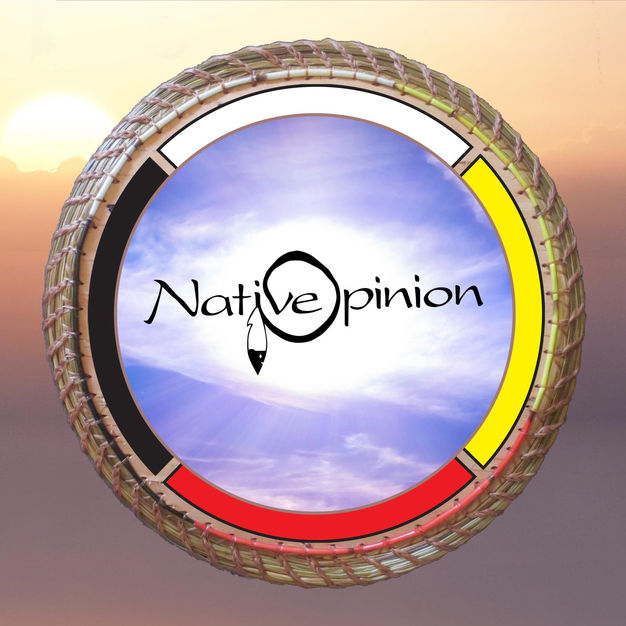 Native Opinion Podcast an American Indian Perspective
Native Opinion Podcast an American Indian Perspective
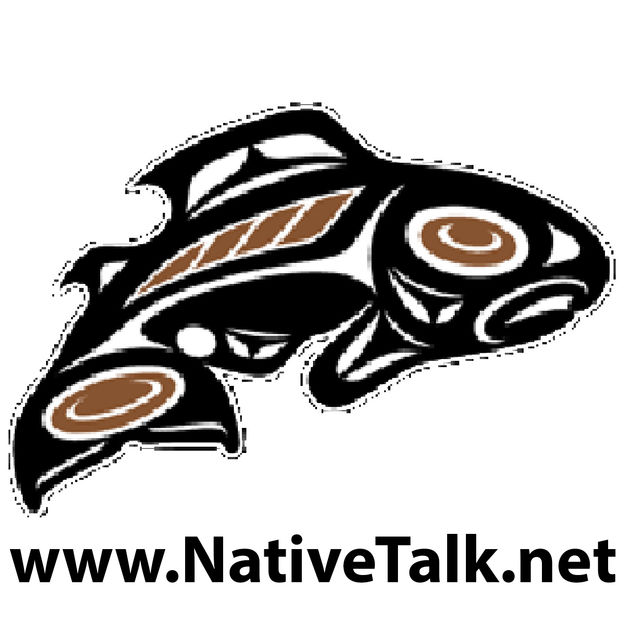 NativeTalk.net Radio Podcast
NativeTalk.net Radio Podcast
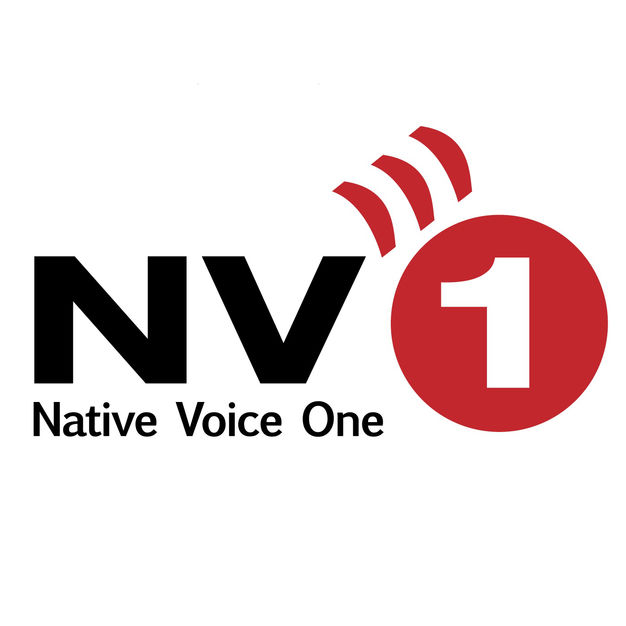 Native Voice One - The Native American Radio Network
Native Voice One - The Native American Radio Network
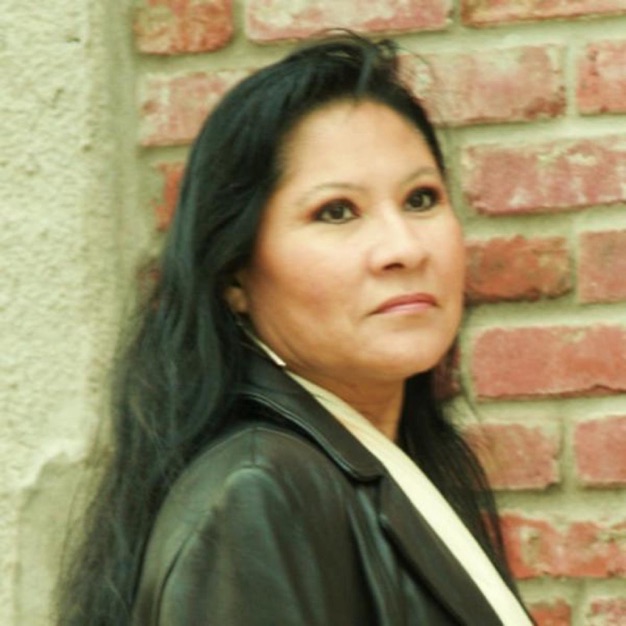 Red Town Radio
Red Town Radio
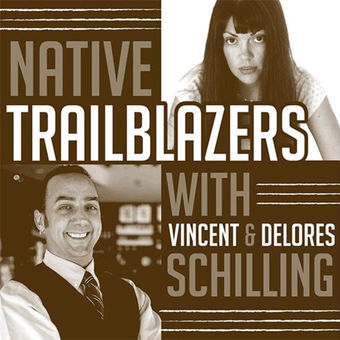 Native Trailblazers
Native Trailblazers
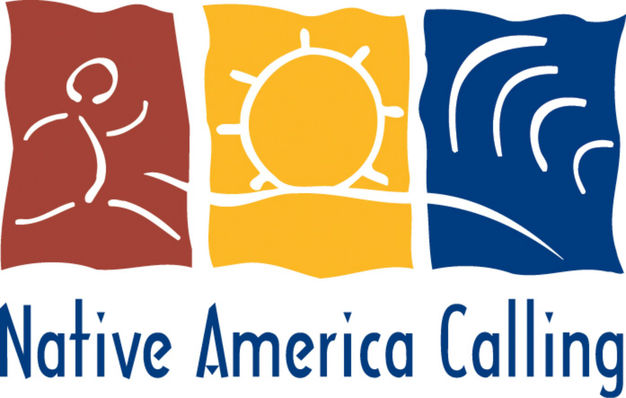 Native America Calling - The Electronic Talking Circle
Native America Calling - The Electronic Talking Circle